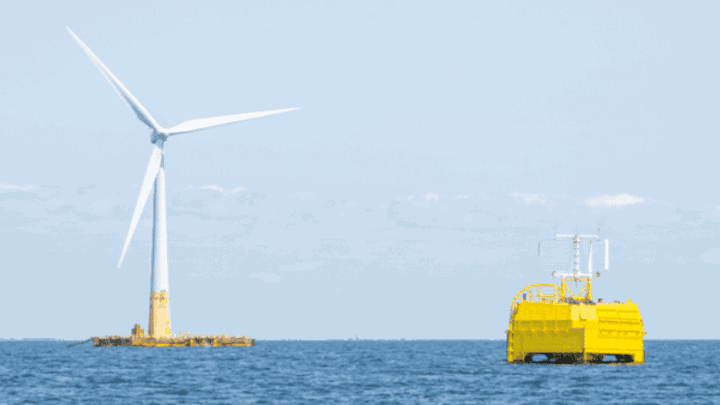Lhyfe announces funding award for another hydrogen first following inauguration of its offshore production pilot
RENEWABLE hydrogen producer Lhyfe and eight partners have been awarded a €20m (US$22.5m) grant by the European Commission (EC) for a 10 MW project that the collaborators expect to be the first offshore hydrogen project to achieve implementation, with production, export, and distribution expected to begin in 2026.
Prior to announcing the funding, Lhyfe began producing hydrogen in the Atlantic Ocean on what it has called the world’s first offshore hydrogen production pilot. This followed eight months of testing of the 1 MW pilot, while moored at a French port.
Achieving commercial offshore production
Coordinated by Lhyfe, the Hydrogen Offshore Production for Europe (HOPE) project is targeting commercialisation. The project will involve developing, building, and operating a 10 MW large-scale offshore unit, that will produce up to 4 t/d of green hydrogen in the North Sea, 1 km off the coast of Belgium’s port of Ostend. It will be in a testing zone that is intended to be the central link in the nation’s hydrogen chain.
The hydrogen will be exported to shore via a more than 1 km composite pipeline, and then compressed and delivered to customers for use in industry and transport in Belgium, northern France, and the southern Netherlands.
The awarded grant covers a five-year period, which includes three years to develop the demonstrator and another two that will be spent demonstrating the technical reliability and commercial viability of the model. Commercial operation of hydrogen production, export, and distribution is intended to continue beyond the project.
The €20m will finance design phases, the supply of equipment, and construction work, as well as research, development, and innovation focused on optimising technology and operation of related infrastructure. The work will also include techno-economic analysis of larger-scale offshore renewable production.
The project partners will use and share their results to accelerate deployment of large-scale hydrogen production. This is expected to help achieve the EC’s target of producing 10m t/y of clean hydrogen in the European Union by 2030 to decarbonise the European economy.
HOPE was selected for funding following a call for proposals by the Clean Hydrogen Partnership, which is supporting research and innovation activities in hydrogen technologies in Europe.
Sealhyfe’s inauguration and testing

Lhyfe announced HOPE as a logical followup to Sealhyfe, its 1 MW offshore pilot. Capable of producing up to 400 kg/d of hydrogen, the pilot began operating 20 km off the coast of La Croisic, France on 20 June, marking what the company said is a “decisive milestone for the future of the sector”. The 200 m2 Sealhyfe platform is at SEM-REV, a European multi-technology offshore testing site for marine renewable energy, that is connected to the grid.
Matthieu Guesné, CEO of Lhyfe said: “Our team – supported brilliantly by our partners – has achieved a genuine feat of technology in successfully designing this first floating green hydrogen production site. We are extremely proud to be the first in the world to produce hydrogen at sea… We are continuing to build on the successes we have had so far, firstly to prove to the world that transition is possible today, and of course to accelerate it.”
Sealhyfe was tested between September 2022 and May of this year, during which time it was moored at the Quai des Frégates, in France’s Saint-Nazaire port. Tests allowed Lhyfe to complete benchmarking and to further optimise and approve its technology’s behaviour. Lhyfe also used the tests to develop the software and algorithm building blocks needed to manage the site remotely. Sealhyfe is now operating fully autonomously at sea, connected to SEM-REV’s subsea hub, which was already connected to a floating wind turbine.
Lhyfe said the pilot project, like HOPE, will help it contribute to achieving the 10m t/y hydrogen production target.
Recent Editions
Catch up on the latest news, views and jobs from The Chemical Engineer. Below are the four latest issues. View a wider selection of the archive from within the Magazine section of this site.




